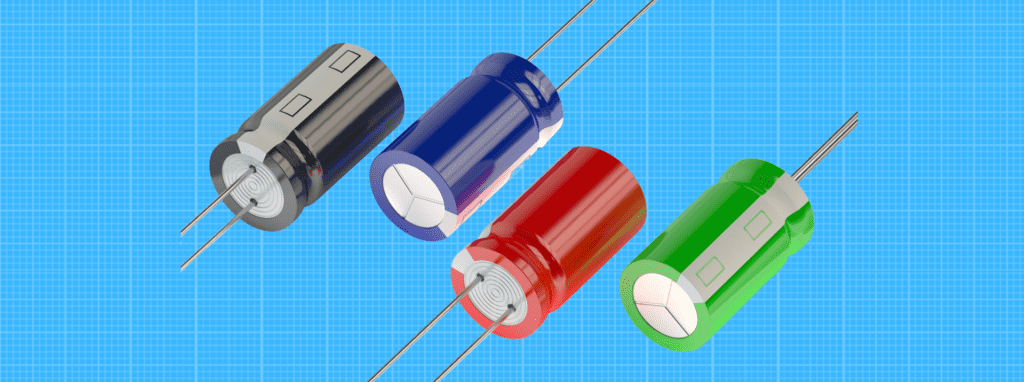What is the symbol for microfarads on a multimeter?
If you’re an electrician, or just starting in the electrical world, then you’ll need to know about different electrical units. One of these is the microfarad.
So what is the symbol for microfarads on a multimeter? Let’s answer this question.
Where we use microfarads?
Microfarads are used in a range of electronic equipment, including capacitors, transistors, and integrated circuits.
But most often, you will come across them when measuring the capacitance of a capacitor.
What is a capacitor?
A capacitor is an electronic component that is used to store electrical charge. It consists of two metal plates that are placed close together, with a non-conductive material (called a dielectric) between them.
When an electrical current passes through the capacitor, it charges the plates. This stored electrical energy can then be used to power electronic devices.
Capacitors are used in a wide range of electronic devices, including computers, cell phones, and radios.

There are two main types of capacitors:
Polar Capacitors
Polar capacitors are a type of electrolytic capacitor that use an electrolyte to provide a path for electrons. This type of capacitor is used in a variety of applications, including power supplies, coupling, decoupling, and filtering.
Electrolytic capacitors are generally larger and have a higher capacitance than other types of capacitors.
Non-Polar Capacitor
Non-polar capacitors are a type of capacitor that stores energy in an electric field. This type of capacitor does not have a polarizing electrode, so the electric field is symmetrical.
Non-polar capacitors are used in a variety of applications, including radios, televisions, and other electronic equipment.
What are the Terminals of a Capacitor?
There are two terminals of a capacitor: the positive terminal and the negative terminal. The positive terminal is usually marked with a “+” sign, while the negative terminal is marked with a “-” sign.
The purpose of the terminals is to connect the capacitor to an electrical circuit. The positive terminal connects to the power supply, while the negative terminal connects to the ground.
How to Read a Capacitor?
To read a capacitor, you need to know two things: the voltage and the capacitance.
The voltage is the amount of electrical potential difference between the positive and negative terminals of the capacitor. Capacitance is the ability of the capacitor to store electrical charge.
The voltage is usually written on the capacitor, while the capacitance is usually written on the side of the capacitor.
Microfarads symbol on multimeter
The symbol for microfarads is “µF”, which you’ll find on the dial of your multimeter. You might also see it written as “uF”. To measure microfarads, set your multimeter to the “µF” or “uF” position.

The standard unit of capacitance is the farad (F). A microfarad is one-millionth of a farad (0.000001 F).
The microfarad (µF) is used to measure the capacitance of an electrical component or circuit. The capacitance of an electrical component or circuit is the ability to store electrical charge.
Basic understanding of the Farad unit
A farad is a unit of capacitance. It is named after the English physicist Michael Faraday. The farad measures how much electric charge is stored on the capacitor.
In the table, you can see different farad units as well as their proportions.
| name | symbol | conversion | example |
| picofarad | pF | 1pF=10-12F | C=10pF |
| nanofarad | nF | 1nF=10-9F | C=10nF |
| microfarad | μF | 1μF=10-6F | C=10μF |
| millifarad | mF | 1mF=10-3F | C=10mF |
| farad | F | C=10F | |
| kilofarad | kF | 1kF=103F | C=10kF |
| megafarad | MF | 1MF=106F | C=10MF |
How to measure microfarads?
To test the capacitance of a capacitor, you will need a multimeter that can measure microfarads. Most cheap multimeters do not have this function.
Before measuring, make sure to drain the capacitor to avoid damaging your multimeter.
First, identify the positive and negative terminals of the capacitor. On a polarized capacitor, one of the terminals will be marked “+” (positive) and the other “–” (negative).
Next, connect the multimeter probes to the capacitor terminals. Make sure that the black probe is connected to the negative terminal and the red probe is connected to the positive terminal.
Now, switch on your multimeter and set it to measure microfarads (µF). You will see a reading in microfarads on the display.
Now that you know what the symbol for microfarads is and how to measure them, you can start using them in your electrical projects.
Safety tips for testing capacitors
Measurement of capacitors requires some safety precautions.
With care and precaution, you can measure capacitors without damaging the instrument that measures them or yourself.
- Wear thick gloves to protect your hands.
- If a capacitor is pressed against your body (as when measuring it in the back of an amplifier or other cramped location), stand on a dry, insulated surface (like a rubber mat) to avoid being electrocuted.
- Use an accurate, well-calibrated digital voltmeter set to the correct range. Do not use an analog (moving-needle) voltmeter, which can be damaged by the high currents involved in capacitor testing.
- If you are not sure whether a capacitor is polarized (has + and – leads), check its datasheet. If no datasheet is available, assume that it is polarized.
- Do not connect a capacitor directly across the terminals of a power supply, as this can damage the capacitor.
- When measuring DC voltage across a capacitor, be aware that the voltmeter itself will affect the reading. To get an accurate reading, first measure the voltage with the meter leads shorted together, then subtract that “offset” voltage from the reading with the meter leads connected to the capacitor.
Conclusion
Now that you know what a microfarad symbol looks like, you can simply measure a capacitor with a digital multimeter. We hope this guide has helped you understand how farads work as a unit of measurement.
